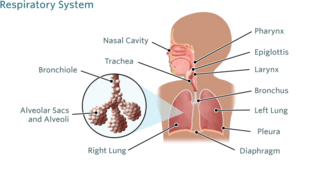What is pneumonia?
Pneumonia is an inflammation of the lungs caused by bacteria, viruses, or chemical irritants. It is a serious infection or inflammation in which the air sacs fill with pus and other liquid.
- Lobar pneumonia. This affects one or more sections (lobes) of the lungs.
- Bronchial pneumonia (or bronchopneumonia). This affects patches throughout both lungs.

What are the different types of pneumonia?
The main types of pneumonia are:
Bacterial pneumonia. This is caused by various bacteria. The streptococcus pneumoniae is the most common bacterium that causes bacterial pneumonia. Many other bacteria may cause bacterial pneumonia including group B streptococcus, staphylococcus aureus, and Group A streptococcus.
Bacterial pneumonia may have a quick onset and the following symptoms may occur:
- Productive cough
- Pain in the chest
- Vomiting or diarrhea
- Decrease in appetite
- Fatigue
- Fever
Viral pneumonia. This is caused by various viruses, including respiratory syncytial virus, or RSV (most commonly seen in children under age 5), parainfluenza virus, influenza virus, and adenovirus.
Early symptoms of viral pneumonia are the same as those of bacterial pneumonia. However, with viral pneumonia, the respiratory involvement happens slowly. Wheezing may occur and the cough may worsen.
Viral pneumonias may make a child susceptible to bacterial pneumonia.
Mycoplasma pneumonia. This presents somewhat different symptoms and physical signs than other types of pneumonia. They generally cause a mild, widespread pneumonia that affects all age groups but more commonly in older children. This type of pneumonia is often called "walking pneumonia" because patients tend to be more active and less severely affected.
Symptoms usually do not start with a cold, and may include the following:
- Fever and cough are the first to develop
- Cough that is persistent and may last three to four weeks
- A severe cough that may produce some mucus
Other less common pneumonias may be caused by the inhaling of food, liquid, gases or dust, or by fungi.
What are the symptoms of pneumonia?
In addition to the symptoms listed above, all pneumonias share the following symptoms. However, each child may experience symptoms differently. Symptoms may include:
- Fever
- Chest or stomach pain
- Decrease in appetite
- Chills
- Breathing fast or hard (watch this video for tips on how to measure your child's breathing rate at home)
- Vomiting
- Headache
- Not feeling well
- Fussiness
The symptoms of pneumonia may resemble other problems or medical conditions. Always consult your child's primary care provider for a diagnosis.
If respiratory symptoms last more than seven to 10 days without any improvement or they return and worsen after getting better, that's a sign to check in with your doctor.
How is pneumonia diagnosed?
Diagnosis is usually made based on the season and the extent of the illness. Based on these factors, your primary care provider may diagnose simply on a thorough history and physical examination, but may include the following tests to confirm the diagnosis:
- Chest X-ray. A diagnostic test which uses invisible electromagnetic energy beams to produce images of internal tissues, bones, and organs onto film.
- Blood tests. Blood count for evidence of infection; arterial blood gas to analyze the amount of carbon dioxide and oxygen in the blood.
- Sputum culture. A diagnostic test performed on the material that is coughed up from the lungs and into the mouth. A sputum culture is often performed to determine if an infection is present.
- Pulse oximetry. An oximeter is a small machine that measures the amount of oxygen in the blood. To obtain this measurement, a small sensor (like a Band-Aid) is taped onto a finger or toe. When the machine is on, a small red light can be seen in the sensor. The sensor is painless and the red light does not get hot.
- Chest CT scan. A test that takes images of the structures in the chest
- Bronchoscopy. A procedure used to look inside the airways of the lungs
- Pleural fluid culture. A culture of fluid sample taken from the pleural space (space between the lungs and chest wall) to identify the bacteria that cause pneumonia
Treatment for pneumonia
Specific treatment for pneumonia will be determined by your child's primary care provider based on:
- Your child's age, overall health, and medical history
- Extent of the condition
- Cause of the condition
- Your child's tolerance for specific medications, procedures, or therapies
- Expectations for the course of the condition
Treatment may include antibiotics for bacterial and mycoplasma pneumonia. There is no clearly effective treatment for viral pneumonia, which usually resolves on its own.
Other treatment may include:
- Appropriate diet
- Increased fluid intake
- Cool mist humidifier in the child's room
- Acetaminophen (for fever and discomfort)
- Medication for cough
- Nebulizer treatments
In the vast majority of cases, children recover fully from pneumonia with basic care from their pediatrician and don't require a trip to the hospital.
Some children may be treated in the hospital if they are having severe breathing problems. While in the hospital, treatment may include:
- Intravenous (IV) or oral antibiotics
- Intravenous (IV) fluids, if your child is unable to drink well
- Oxygen therapy
- Frequent suctioning of your child's nose and mouth (to help get rid of thick secretions)
- Nebulizer treatments, as ordered by your child's primary care provider